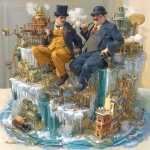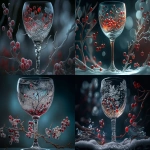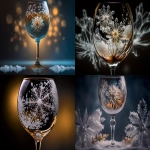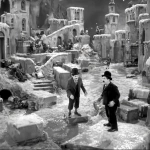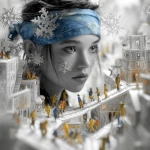Explore the Best AI Image Gallery
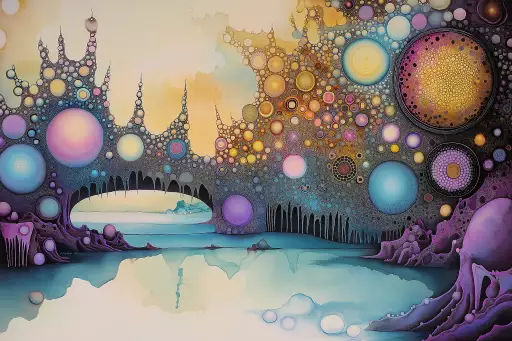
Quantum Creativity: Where Art Meets the Quantum Realm
The world of art has always been at the forefront of innovation, constantly pushing boundaries and exploring new frontiers. Today, a new paradigm is emerging, one that intertwines the ethereal realm of creativity with the mind-bending power of quantum computing. This convergence promises to reshape artistic expression, ushering in an era of unimaginable possibilities.
Quantum Leaps in Creative Applications
Imagine a world where music is composed by algorithms that tap into the infinite potential of quantum states, generating melodies that transcend human comprehension. Visual artists could harness quantum computers to create mesmerizing artworks that evolve and shift with every viewers interaction. Storytellers might weave narratives guided by quantum simulations, crafting tales that explore alternate realities and hidden dimensions.
Breaking the Barriers of Traditional Art
- Music Composition: Quantum algorithms can analyze vast musical datasets to discover novel harmonies, rhythms, and structures, generating compositions that are both beautiful and intellectually stimulating.
- Visual Art: Quantum computers can create stunningly complex patterns and fractal designs, pushing the boundaries of visual art. Imagine paintings that react to light and sound, or sculptures that morph and change with the viewers presence.
- Narrative Design: Quantum simulations can generate intricate storylines, populated by characters whose motivations and actions are driven by probabilistic algorithms. This opens up a world of interactive storytelling where narratives evolve dynamically based on user choices.
The Ethical Landscape of Quantum Creativity
As with any powerful technology, the rise of quantum computing in the creative sphere raises important ethical considerations.
- Authorship and Ownership: Who owns the copyright to a work created by a quantum algorithm? Is it the programmer who designed the algorithm, the user who inputs the parameters, or the computer itself?
- Bias and Representation: Quantum algorithms are trained on existing data, which can perpetuate biases and stereotypes. It is crucial to ensure that quantum-generated art is inclusive and representative of diverse perspectives.
- Accessibility and Equity: Access to quantum computing resources may be initially limited, creating a digital divide in the creative industry. Efforts should be made to make quantum technology accessible to all artists and creators, regardless of their background or resources.
Future Trends in Quantum Creativity
The intersection of quantum computing and creativity is still in its early stages, but the potential for innovation is limitless. Here are some future trends to watch:
- Quantum-Inspired Art Tools: Expect to see the emergence of new software and hardware tools that harness the principles of quantum mechanics to inspire and enhance artistic expression.
- Hybrid Artistic Practices: Artists will increasingly blend traditional techniques with quantum-generated elements, creating works that blur the lines between the physical and digital realms.
- Immersive Quantum Experiences: Quantum computing will enable the creation of truly immersive art experiences, transporting viewers into virtual worlds where imagination knows no bounds.
The convergence of quantum computing and creativity promises to redefine the very nature of art. As we delve deeper into this uncharted territory, we can expect a wave of groundbreaking innovations that will captivate, inspire, and challenge our perceptions of what is possible.
